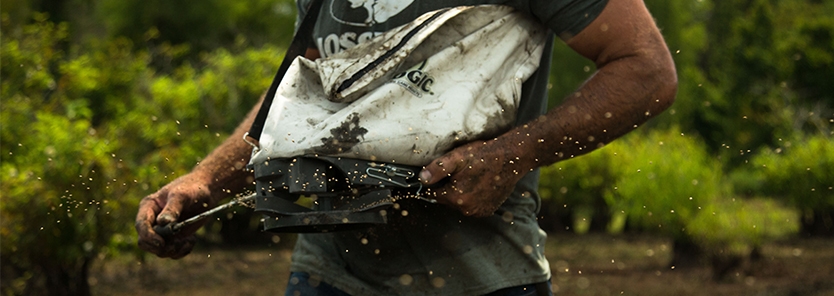Choosing the Best Food Plot Seed
Most food plot farmers only look at the price tag on the product in the store and they think no further than that. Most low end, low cost food plot seeds also deliver lower performance. They don’t consider with a premium seed you are getting a better germination rate, superior attraction, improved yield, enhanced palatability and in the case of perennials a longer life. They think they’re saving money by purchasing cheap seed, but in fact, the opposite is true.
Cheaper doesn’t mean Better
While food plot seed is the least expensive part of your food plot program, you actually end up losing money by purchasing cheap seed. There are reasons why it is cheap! The biggest is because it doesn’t have one or more of the desired characteristics for the end result that it’s being sold for. As an example; you plant cheap clover in plot A and clover that cost a bit more, but is the right stuff for the job, in plot B – you think you’ve saved money in plot A. The problem being – as said, most people only think up until that point. They don’t realize they’ve just lost money in plot A because the clover in plot B is going to produce tons more forage, is more attractive to whitetails, is more nutritious and is better for them. The seed in plot B has probably also been treated with a coating to help it perform better from germination throughout the growing process. It will also last longer (obviously when talking about perennials). As you can see, it’s absurd when someone thinks they’re saving money in this way. You are better off planting less acreage and doing it right than doing twice the acreage with cheap seed.
Food Plot Seed Differences
Most agricultural-grade seeds, such as rye, alfalfa or most of our U.S. grown clovers are genetically bred primarily for consumption by livestock, for baling or for a specific end result – none of which are for whitetail consumption. That’s why you see most of our U.S. produced clovers will grow tall, because a bovine has a short neck so it’s genetically designed to reach up to their mouth – this also makes it easier to bale. However, putting all of its energy into producing a big stalk is the last thing you should want your clover to do. Instead it should put its energy into leaf production. When comparing large-leaved variety to large-leaved variety, small-leaved to small leaved, etc. you will typically find that New Zealand clovers, like what is found in BioLogic’s Non-Typical Clover, will produce a better yield and more leaf matter when compared to our U.S. clovers. That’s what your whitetails will prefer. Purchase the right seed for the job from a reputable manufacturer with a long history of success and one that guarantees their product.
~
For more from GameKeeper Farming For Wildlife like Choosing the Best Food Plot Seed join our weekly newsletter or subscribe to GameKeepers Magazine. Your source for information, equipment, know-how, deals and discounts to help you get the most from every hard-earned moment in the field.









